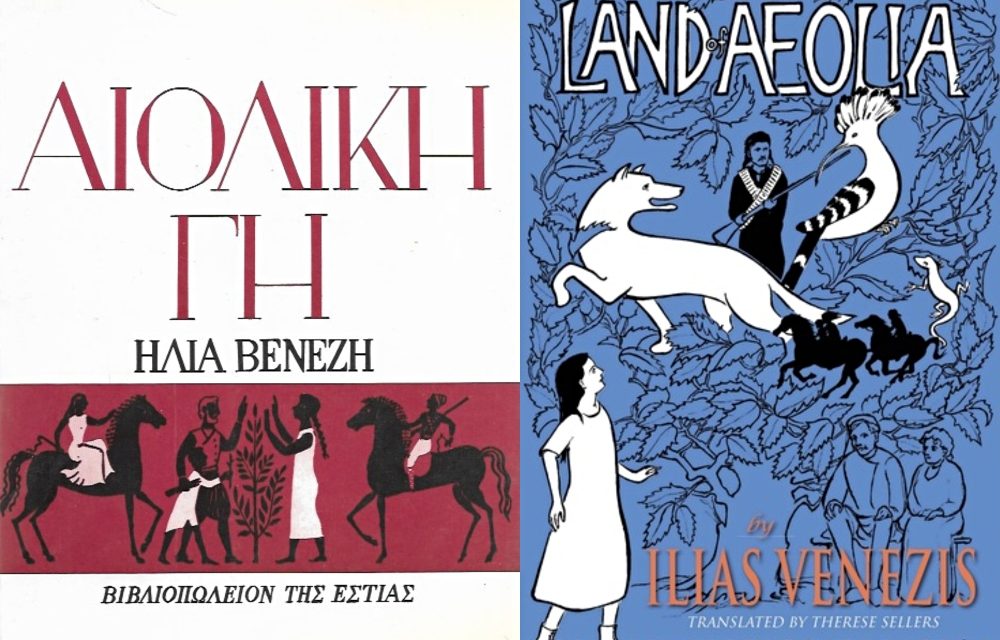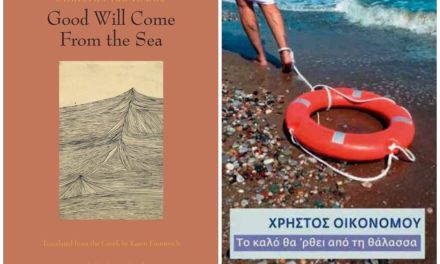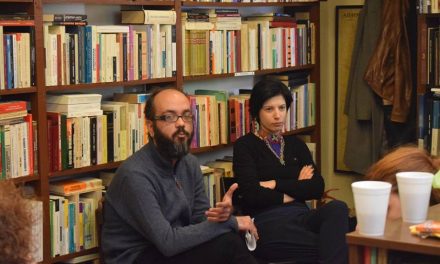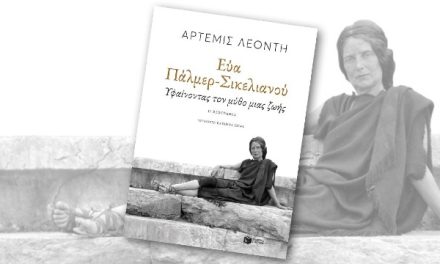Land of Aeolia by Ilias Venezis is inspired by the author’s happy childhood memories from his summers spent at his grandparents’ farming estate, where he would explore the rich natural world around him, listen to the enthralling stories told by his grandparents and their numerous guests and feel the first pangs of love.
The book is an ode to a paradise forever lost – whether this is the author’s beloved homeland or his childhood innocence. It is also considered one of the most important works of fiction portraying the life of the Greek population of Asia Minor, prior to the persecutions and, later, the population exchanges brought on by World War I, the rise of the Turkish National Movement and the Greco-Turkish War of 1919-1922.
Ilias Venezis
Ilias Venezis was born and raised as Ilias Mellos in Kydonies (Aivali, modern-day Ayvalık) on the Aegean coast of Turkey in 1904. The outbreak of WWI (where the Ottoman Empire was part of the Central Powers) made his family relocate to the Greek island of Lesbos; in 1919, following the capture of Smyrna (modern-day İzmir) and the surrounding areas by the Greek forces, at the start of the Greco-Turkish War, the family returned to their homeland.
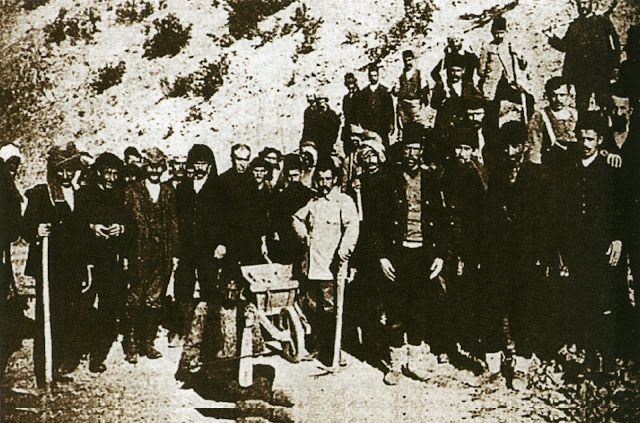 Photograph from a Labour Battalion (via Wikimedia Commons)
Photograph from a Labour Battalion (via Wikimedia Commons)
In 1922, during the Smyrna Catastrophe, they would join the thousands of Greeks seeking to flee the advancing Turkish army. Although the rest of his family managed to escape, he was captured and forcibly conscripted a Labour Battalions (Amele Taburları or Amele taburu), basically labour camps where prisoners were made to work under extremely harsh conditions and with little to no food. For fourteen months he was worked into exhaustion, with most of his fellow captives either dying of hardship or executed. In 1923, following the sign of the Lausanne Treaty, the surviving prisoners were set free and Venezis was able to join his family on Lesbos.
There he would meet writer Stratis Myrivilis, a native of Lesbos who had served in WWI and the Greco-Turkish War. That year, Myrivilis had begun publishing his own novel Life in the Tomb (inspired by his WWI experiences) in the local newspaper Kambana, in serialised form. He was the one who incited Venezis to record his experiences as a survivor of the Labour Battalions, resulting in the autobiographical novel Number 31328: The Book of Slavery (titled after his prisoner number). The novel was first published in serialised form in the same newspaper.
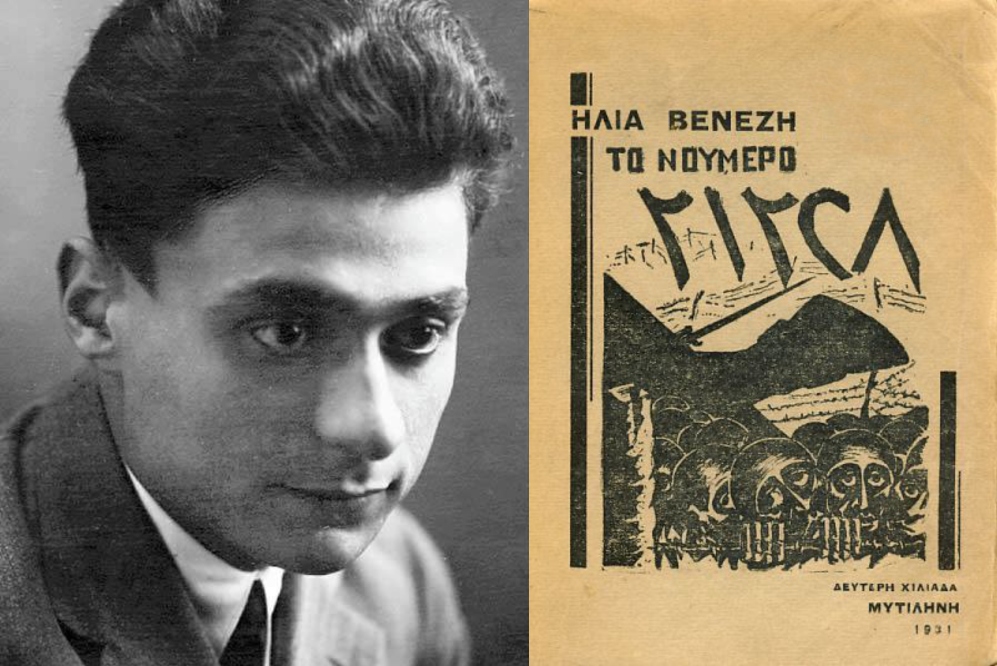 Cover of a reprint of the first edition of Number 31328 (1931)
Cover of a reprint of the first edition of Number 31328 (1931)
On Lesbos he started working in the local offices of the Bank of Greece, and in 1932 he was transferred to Athens, where he would spend the rest of his life. In 1939 he published his second novel, Serenity, which follows a group of refugees from Asia Minor as they struggle to build a life in an arid part of Attica. In 1940, he shared with Stratis Myrivilis the prize for best novel (for Serenity and The blue book, respectively) at the 1939 State Prizes for Literature.
Around 1938, Venezis had begun writing Land of Aeolia, which would be published in 1943, while Greece was under Nazi occupation. Venezis gave instructions for the publication of the book while he was in prison awaiting execution for attending a secret memorial of Greek fighters on the Albanian front. At the last minute he was spared, thanks to the intervention of friends and supporters, including Archbishop Damaskinos. This experience would inspire his 1945 theatrical play Block C.
In the years after the war he became managing director of the National Theatre of Greece and Vice-Chair of the Board of Directors of the Greek national Opera. All his novels were continuously reprinted and in 1957 he was elected to the Academy of Athens. He also wrote short stories, travel books and biographies. He died in Athens in 1973 following a serious illness and was buried in the cemetery of Molyvos, on Lesbos.
 (Source: ert.gr)
(Source: ert.gr)
Land of Aeolia
Land of Aeolia completes the unofficial trilogy inspired by Venezis’s Asia Minor experiences; after starting with the brutal treatment of the prisoners at the Labour Battalions, and continuing with the harsh realities faced by the refuges in their new lives, the writer chooses to look back on the carefree, idyllic life he had a s a child in his homeland, now forever lost.
In the semi-autobiographical novel, Venezis describes his native land of Aeolia through the eyes of a young boy, Petros, who, along with his siblings, spends summers at his maternal grandparents’ farming estate close to Aivali, at the foot of a mountain range he refers to as the Kimindenia. The book contains many fairytale-like elements, especially in its depiction of nature –the mountains with all their animals, birds and reptiles– but also in the stories often recounted by the grandfather’s guests, which include farmers and camel drivers as well as smugglers, Christians and Muslims alike.
This dreamlike childhood comes to an abrupt end when Petros’s family has to leave its homeland at the start of World War I, when local Christian populations begin to be persecuted by the Ottoman authorities. Leaving the Kimindenia behind to find refuge in Greece, his grandfather carries against his chest a handkerchief with a handful of earth, so that, in their new home, they could plant some basil in a small piece of the land of Aeolia.
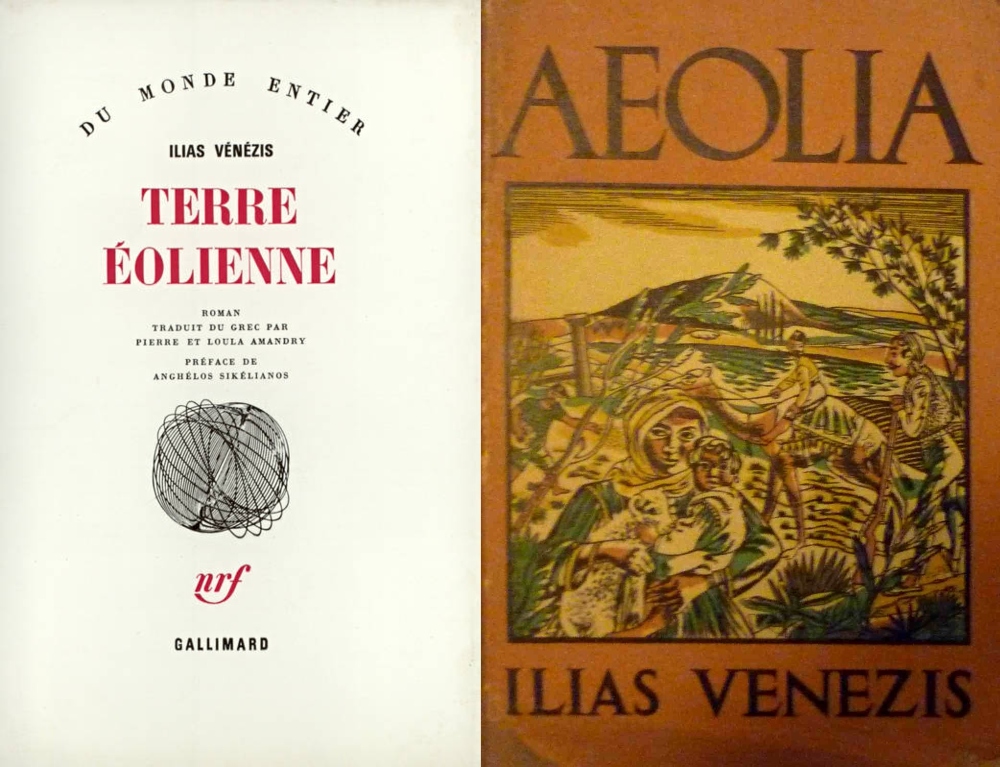 Covers of the first editions in France and the UK
Covers of the first editions in France and the UK
The novel was first published in English in 1949, under the title Aeolia, translated by E.D. Scott-Kilvert, with a preface by Lawrence Durrell (that same translation would later also be published in the USA under the title Beyond the Aegean); a new translation by Ancient and Modern Greek scholar Therese Sellers was published in 2020 by Denise Harvey, an independent publisher based on the Greek island of Evia, including all the passages that were omitted in the first translation, and featuring a prologue by Bruce Clark, author of Twice a Stranger, a study Greek-Turkish population exchanges of 1923. The book has also been translated in 16 other languages including French, German, Spanish, Italian and Russian.
On the occasion of the 2020 translation, A. E. Stallings would write in her review for the Times Literary Supplement that the book –”part novel, part fairy tale, part memoir”– demonstrates a magical realism reminiscent not so much of Latin American literature but rather of Homer’s epic poems, a world where “drops of blood can speak, eels fall in love, the forest can move”. Yet Venezis doesn’t stop shy of depicting “the unthinking cruelty of the children, too, who shoot at hoopoes and weasels, torture tortoises and raid birds’ nests for eggs”.
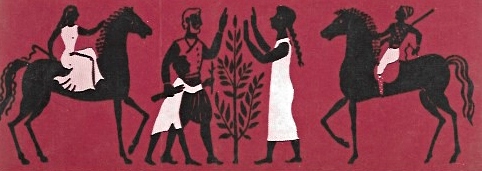 In his book review for the New York Times, which appeared shortly after the release of the American edition, writer Edmund Fuller would liken the novel to “a loosely woven fabric of memories of the somewhat Eden-like existence […] culminating in the heartbreaking expulsion of the Greeks at the outbreak of World War I”, and would assert that it possessed “the universal, earth-rooted, timeless quality of all true people’s classics”.
In his book review for the New York Times, which appeared shortly after the release of the American edition, writer Edmund Fuller would liken the novel to “a loosely woven fabric of memories of the somewhat Eden-like existence […] culminating in the heartbreaking expulsion of the Greeks at the outbreak of World War I”, and would assert that it possessed “the universal, earth-rooted, timeless quality of all true people’s classics”.
Land of Aeolia remains Venezis’s most important work, and one of the great classics of Greek literature to date.
Read also via Greek News Agenda: Reading Greece: Writer and translator Therese Sellers on being “Greek by affection”; BOOK OF THE MONTH: “Life in the Tomb” by Stratis Myrivilis; Reading Greece: The Asia Minor Catastrophe in Modern Greek Literature; BOOK OF THE MONTH: “Farewell Anatolia” by Dido Sotiriou; An Englishwoman in Evia: Publisher Denise Harvey on her love for Greek literature and culture; Rethinking Greece | Emilia Salvanou on the Greek-Turkish population exchange after 1922 and the making of Greek refugees’ memory
N.M.

